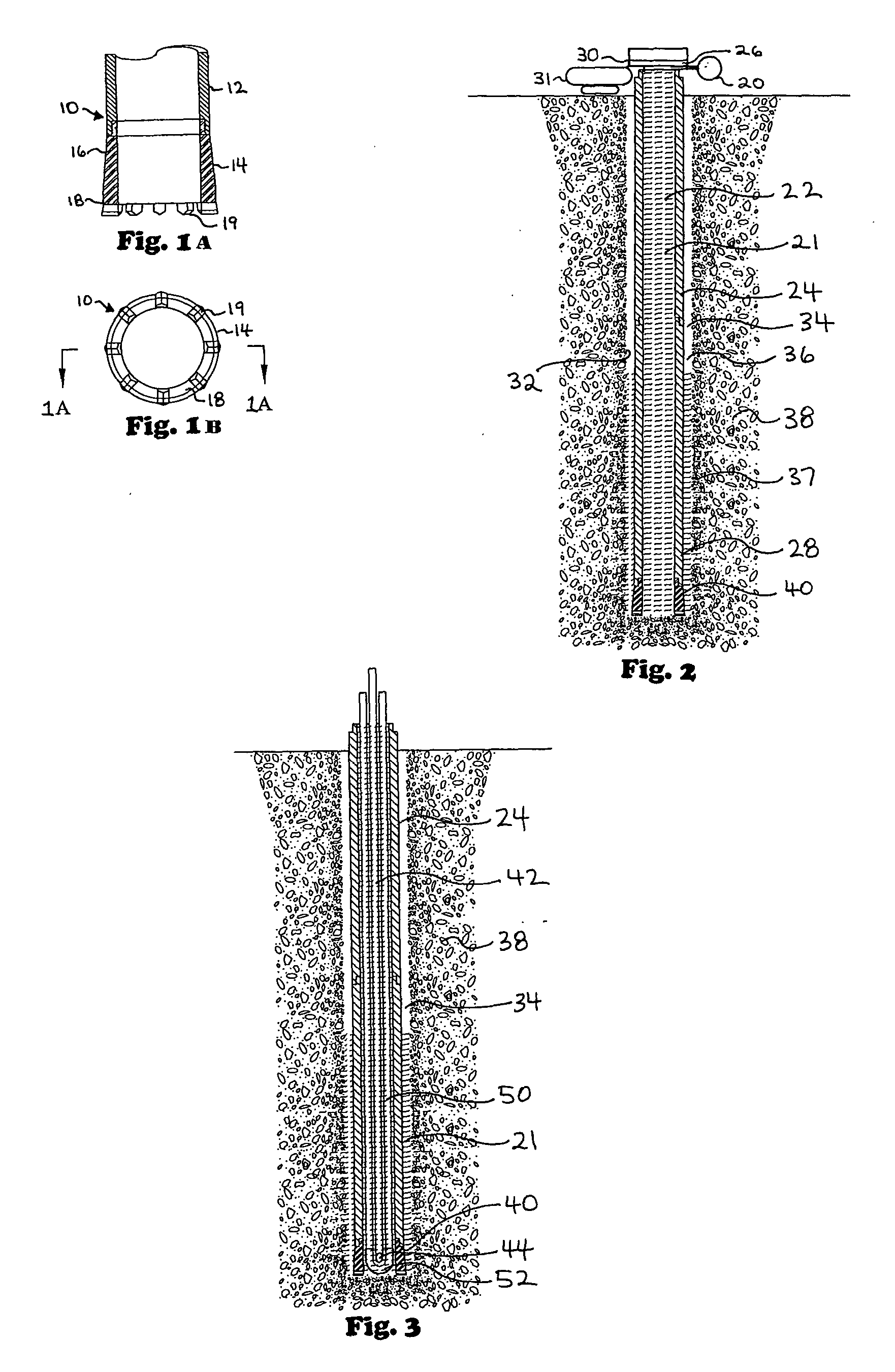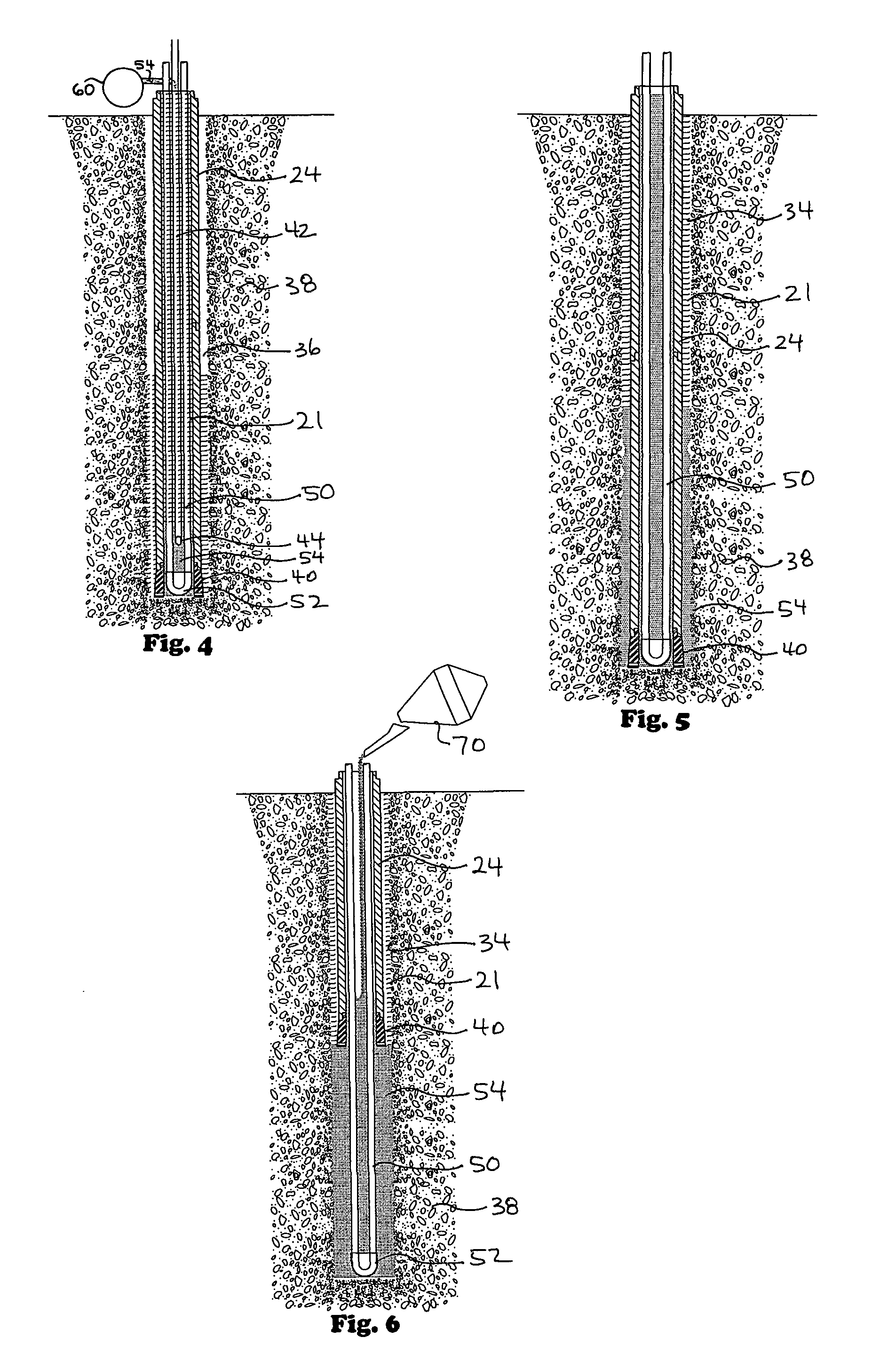Earth loop installation with sonic drilling
a technology of earth loop and installation, which is applied in the direction of sealing/packing, wellbore/well accessories, lighting and heating equipment, etc., can solve the problems of increasing the cost of installing a geothermal heat pump system, increasing the cost of drilling and completion, so as to increase the efficiency of loop insertion and efficiency, the effect of reducing the construction cost of earth loop heat exchangers and increasing the drilling rate and efficiency
- Summary
- Abstract
- Description
- Claims
- Application Information
AI Technical Summary
Benefits of technology
Problems solved by technology
Method used
Image
Examples
Embodiment Construction
[0027] In one embodiment, a system according to the present invention includes steps of: drilling; earth loop insertion; grouting; and casing recovery. In one particular drilling method according to the present invention a steel cased borehole 5 inches in diameter 350 feet deep in an unconsolidated formation (e.g., but not limited to, sandy clay) is drilled in 20 minutes if no unexpected drilling conditions are encountered. In one aspect the drilling rig is a crawler-mounted or truck-mounted machine. In one aspect only a single operator is required to perform the complete drilling and casing function.
[0028] In one embodiment a drilling machine according to the present invention has a sonic rotary drill head; an on-board carousel or magazine for both drill pipe and casing; an onboard water pump; an onboard air compressor; a drill mast to which is movably connected a sonic drilling head; movement apparatus for moving the sonic drilling head up and down (and casing connected thereto);...
PUM
 Login to View More
Login to View More Abstract
Description
Claims
Application Information
 Login to View More
Login to View More - R&D
- Intellectual Property
- Life Sciences
- Materials
- Tech Scout
- Unparalleled Data Quality
- Higher Quality Content
- 60% Fewer Hallucinations
Browse by: Latest US Patents, China's latest patents, Technical Efficacy Thesaurus, Application Domain, Technology Topic, Popular Technical Reports.
© 2025 PatSnap. All rights reserved.Legal|Privacy policy|Modern Slavery Act Transparency Statement|Sitemap|About US| Contact US: help@patsnap.com



